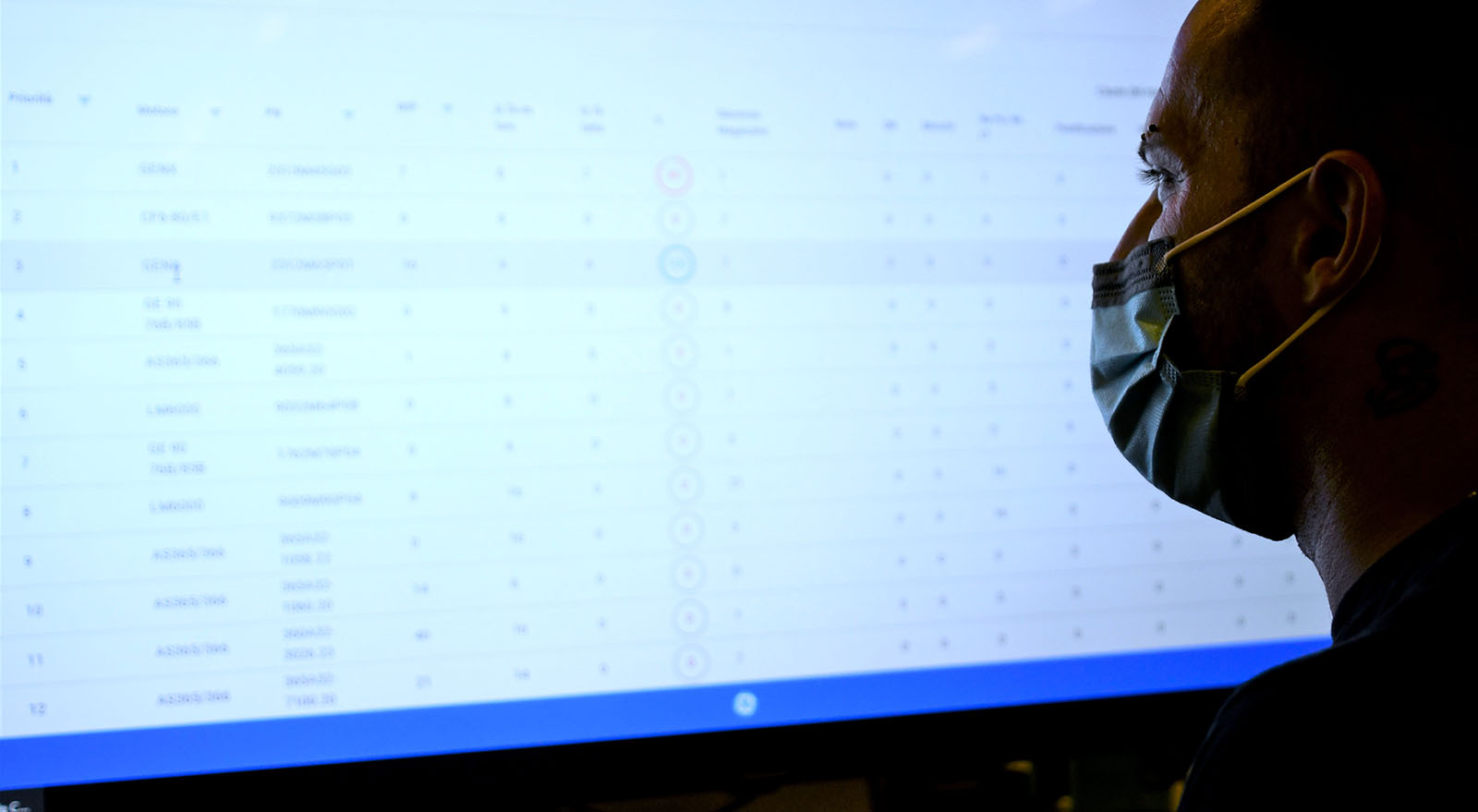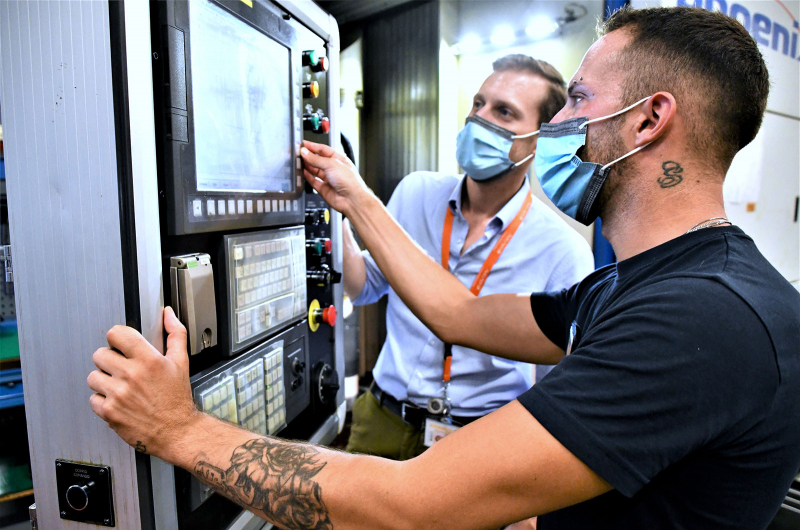Invent
From operators to developers
The Lean culture keeps permeating the company’s departments, bringing new opportunities and fostering collaboration between machines operators and digital specialists.
Aug 2021
There are stories within stories. The story of HARK, acronym for Hoshin Algorithm for Reliable Kanban, belongs to the Lean Transformation series, under constant development within Avio Aero for some time now and involving, in this case, the factory and the IT infrastructure of the Digital function.
The IT solution offered by HARK is dedicated to tollgate-based production planning. In process management, a tollgate is defined on the basis of an ordered sequence of industrial operations that typically involve the same factory area or type of processing. Tollgates can be first-level (macro-operations) or second-level (in this case each tollgate is composed of a smaller number of operations). A complete sequence goes from the start of production to storage in the warehouse. Production planning based on these tollgates provides for the scheduling of production phases based on the quantity of materials and products identified at each stage of production.
The idea came from the production departments in Rivalta di Torino, where these processes are managed using a traditional tool, an Excel spreadsheet, which has evolved with HARK into a structured and robust web application. In fact, this application allows production data recorded on the Enterprise Resource Planning system (SAP) to be combined with data from Avio Aero's general Data Lake to organize and schedule the production operations of every single engine part produced.
“HARK is the fruit of the collective intelligence of our company,” said Ezio Dadone, Business Leader and sponsor of the project. “The Line operator and IT developer have worked side by side to find a technological solution, starting from the real need to have control over the production process at all times through an easy-to-consult interactive interface. The name of the application - created through an internal co-creation project - is self-explanatory in terms of its purpose, which is to increase efficiency, and sums up the level of assimilation of the Lean culture that permeates everything we do.”
Matteo Longo, technological coordinator of the project, added: “HARK is further evidence of Avio Aero's digital transformation that sees the Digital function as a leading player at the service of the business. We act as interpreters of the needs of the functions and develop solutions that contribute to implementing the concept of Factory 4.0. This application combines Lean principles and the pull system: a method of production control in which downstream activities signal their needs to upstream activities. Pull production aims to eliminate overproduction and is one of the three main components of a complete just-in-time production system.”
“The operator is the true key player," added Ezio Dadone. “Improvements and interventions do not come from above. For those at the machine interface who know every detail of their work, this provides an opportunity to contribute and intervene in the process. It is therefore the most promising of the problem solving processes. And that’s not all: this method also allows us to reinforce our internal culture, reaffirming the importance of empowering every single representative of the various functions to contribute to the success of the entire organization.”
Improvements and interventions do not come from above. For those at the machine interface who know every detail of their work, this provides an opportunity to contribute and intervene in the process
Currently, the departments directly involved in use of the application are the Gears and Castings area, involving over 400 people in total, and it will soon become a tool for the entire Rivalta plant. The Pomigliano plant has also started adoption of this application, which by its very nature allows high replicability in all production areas.
“This application is unique and could potentially be made available to other manufacturing companies, which is why we are considering patent protection,” Longo emphasized, concluding, “The intelligence of our people is the company's most valuable asset and it is our duty to try and protect it.”






